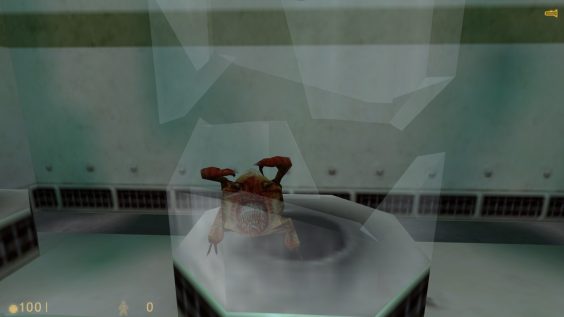
Standard Headcrab
The Standard Headcrab, or simply the Headcrab, is the most common Headcrab subspecies, having teleported to Earth in abundant numbers during the Black Mesa Incident.
Overview:
Headcrabs are fairly small creatures, about two feet long from front leg to back and a foot wide. They have round, smooth, tan-colored bodies and four legs, two long clawed ones on the front and two thick, stubby ones in the back. Despite their small size, the Headcrab’s back legs can support its entire body, allowing it to “tiptoe” across the ground and leap several feet into the air at its prey. Four “mouthparts” can be seen on their front that end in sharp fangs, possibly used to either hang onto a host or inject them with a sedative or some other chemical used in the zombification process. Under the body is a round, lipless mouth containing a sharp “beak” used to burrow through the host’s skull. A Headcrab may weigh up to eight and a half pounds, although this is the weight of Lamarr, a well-fed Headcrab.
Headcrabs can produce a variety of vocalizations. When they are not hunting, Headcrabs usually emit squeaks and fairly quiet, repetitive calls while gently swaying their bodies back and forth. When attacking, Headcrabs emit a sharp, shrill shriek as they leap towards their victims.
In Half-Life, Headcrabs are found to have originated from a giant creature known as a Gonarch which shares similar physical qualities with Headcrabs. Underdeveloped “baby” Headcrabs spawn at a rapid rate from a sac that dangles beneath the creature. Baby Headcrabs look similar to baby scorpions, being very tiny creatures with soft, translucent white bodies.
Behavior and skills:
The Headcrab can appear harmless at a glance: it is small and slow-moving with its tiptoe-like gait. Although it can quickly leap long distances using its hind legs, tilting its body upwards to turn its mouth towards its target, such an assault can only inflict minor injuries with the claws, legs and teeth. However, the Headcrab’s main goal is not to kill, but to attach itself onto an appropriate host’s head. Using its leaping ability, it can reach a host’s head and attempt to burrow its beak through the skull. Once successful, the Headcrab takes control of the host’s nervous system and causes physical alterations to the host’s body, such as causing its hands to deteriorate into bony ‘claws’, via an unknown biological process. The host then rips open its own torso, revealing the stomach and other organs, for feeding purposes. Such a Headcrab-controlled host is called a Standard Zombie (distinct from Zombies created by other Headcrab subspecies, which have different characteristics).
A Headcrab will frequently lie in wait in dark corners or ventilation shafts for unsuspecting prey to walk by. In more open environments, the creatures are known to bury themselves in the ground to hide, then climb out to the surface and attack when a possible host draws near. Headcrabs appear to be fairly unintelligent creatures and will pursue their prey under very dangerous conditions, moving through dangerous areas or towards hostile prey, even as fellow Headcrabs die in front of them.
Headcrabs have been observed to be prey for Bullsquids, Vortigaunts, and Barnacles. Isaac Kleiner’s pet Headcrab, Lamarr, seems to have a taste for watermelons, suggesting that Headcrabs are actually omnivorous, or possibly scavengers when not looking for a host. Headcrabs have also been seen cooked and eaten by humans in Black Mesa East, which suggest that they are used as a common food source after the extinction of most of Earth’s species. Citizens in Half-Life 2: Episode One comment that “They don’t taste like crab.”
It is also apparently possible to “tame” a Headcrab to some extent, as evidenced by Lamarr.
Barnacle
The Barnacle (taxonomic designation: Cirripedia donaldsonia, or “Donaldson’s Barnacle”) is a stationary ceiling-dwelling alien creature, which is most notable for its unique method of catching prey using its sticky “tongue.”
Overview:
A Barnacle is little more than a large mouth full of two rows of sharp teeth, with a long string-like appendage dangling out of its maw. The Barnacle uses its “tongue” to snare and lift prey items; the appendage is strong enough to support the weight of an adult human. On its tongue is a very strong natural adhesive (such as cilia/setae) that can bond to whatever it comes in contact with.
Barnacles cannot differentiate between living and inorganic items that become stuck to their tongues, and can be tricked into hauling in barrels, pallets and other debris commonly found in their vicinity. Upon attempting to consume these items, the Barnacle will find them unpalatable and release them.
The ability to turn their tongue’s stickiness on and off at will suggests that the Barnacle tongue adhesive is actually formed by cilia or setae (tiny hairs or bristles, as on a gecko’s foot) rather than a sticky chemical. By this model, when potential prey comes in contact with the tongue, the Barnacle feels it and directs the cilia/setae to activate into their adhesive form, and conversely to deactivate into their normal relaxed form if the prey turns out to be unsuitable. If the Barnacle is killed, the cilia/setae are permanently deactivated also, which is why dead Barnacle tongues are not sticky.
Barnacles attach themselves to ceilings or the undersides of overhangs, from which they lower their sticky tongues. Although Barnacles can be found in a wide array of environments, they seem to prefer damp areas. Curiously, while many Barnacles can be found infesting the Black Mesa Research Facility, few are encountered on Xen.
Barnacles are relatively weak when compared to most enemies: 4-5 shots from a 9mm pistol will kill them. They are most easily dispatched from a distance, although players who become ensnared by its tongue are usually able to kill them before being consumed. The Barnacles are weak against the crowbar, which in both games kills them in a single hit. (However, in Half-Life: Day One, four hits are required, which will be a fatal move for the player.) In any game, attacking a Barnacle which is high up with a crowbar is generally a bad idea, as the player will take fall damage as well as the Barnacle’s attack. When killed, Barnacles turn inside out and disgorge skulls, bones, and other remains of recently consumed victims, along with their own greenish digestive juices, giving the impression the Barnacle is vomiting, and the tongue retracts somewhat.
In Opposing Force, a scientist refers to removing a Barnacle from its “point of gestation.” This suggests that a Barnacle will spend its entire life attached to the spot where it was born. Earthly barnacles use mobile larval stages and ocean currents to reach new growing areas; it is likely that Xen Barnacles use a similar means to spread. In addition – Half Life: Opposing Force has an organic weapon, the Barnacle Grapple which acts as a grappling hook and can be used to attach the player to spores found across the map. It is simply a detached barnacle.
The name “Cirripedia donaldsonia” comes from its discoverer and first victim, Black Mesa scientist Louis Donaldson.
Behavior and skills:
Barnacles are relatively simple creatures. They do not appear to possess any degree of intelligence – instead of actively hunting prey, they feed by reacting to external stimulus, in the form of animals which come into contact with the Barnacles’ tongue. However, although the creatures do not demonstrate any intelligence in hunting, they possess an uncanny ability to attach themselves to ceilings overlooking thoroughfares frequented by potential prey, although some do seem to hide in corners far away from routes used by prey; the logical explanation for this is that Barnacles in less adequate conditions die out, while luckier creatures flourish. Similarly to real barnacles, they typically occur in groups or colonies. These are found throughout the entire Half-Life series, and the player often encounters small areas populated with large numbers of Barnacles, which do not seem to be in competition with each other.
Barnacles appear to be capable of killing and digesting a human being within only a few seconds, literally swallowing it, stripping the skeleton of flesh and spitting out indigestible bones. As the Barnacles are never seen moving, it can be assumed that their food requirements are relatively low and that they can survive for extended periods without food, perhaps explaining their sedentary lifestyle.
In the original Half-Life, humans become immobilized when caught by Barnacles — although they struggle when wrapped in the creatures’ tongues, captured humans appear to be incapable of fighting against the Barnacle when they reach the mouth, even though they are clearly still alive. It is possible to save an NPC from a Barnacle by killing it before he is consumed. The NPC will then simply drop, unharmed.
In Half-Life 2, Barnacles take a few moments to differentiate between edible and inedible material. Consequently, objects such as tires, barrels or pieces of wood can be used to “distract” a Barnacle and allow a player to easily slip past it since it only grabs one thing at a time. In a similar fashion, by setting alight an explosive barrel at the right moment, a player can kill a Barnacle attempting to eat it (or even several closely-attacked Barnacles). It also seems that the Barnacle tries to wrap its tongue around the target tight enough to break bones and kill it. This is based on the observation that birds as well as Resistance or Combine troops die before they even reach the main body, merely by virtue of being caught. Turning on closed captions and then being captured by the Barnacle reveals the sound file is called “Barnacle Neckbreak;” also, in a Half-Life 2 concept art image, a Barnacle’s tongue is seen wrapped around Gordon’s neck, trying to strangle him. Gordon Freeman is unaffected by the tongue’s crushing attempts, probably due to his HEV Suit’s neck-covering extension. An alternative explanation might be that the tongue incapacitates the Barnacle’s prey by means of some sort of paralyzing neurotoxin.
It is interesting to note the manner in which a Barnacle in Half-Life 2: Episode One deals with a Zombine: after capturing a Zombine, the Barnacle will only eat the Headcrab, not the zombie. On the other hand, Barnacles have been recorded consuming the entire body of unaffected Combine soldiers. This could be considered evidence that Barnacles dislike the taste of rotting or decomposed flesh, and would be consistent with their rejection of decomposed bodies thrown at them by the player. A glitch might occur where the Barnacle kills a zombie of any type and throws the body to the ground. However, it will continue to pick it up and discard it until the body is moved.
In Half-Life 2: Episode Two, Barnacles are seen trapping and eating Antlions. They are also seen trapping Acid Worker Antlions, but as the Worker explodes as it is bitten into the Barnacle is also killed. Also noteworthy is that Barnacles are unable to distinguish Poison Headcrabs from normal ones and will also die upon eating them.
An interesting fact is that the Barnacle will only eat what it identifies as a humanoid-type creature–both humans and Vortigaunts–if it latches onto the head. If it latches to the waist, leg, hand, etc. the Barnacle drops the body as if inedible, possibly because of the difficulty in consuming it in such position, or it doesn’t recognize the shape due to latching on part of a body that is not the head or neck.
Zombie
A Zombie is a common enemy featured in the Half-Life series. It is the result of a Headcrab attaching to the head of a suitable host, taking control over its victim’s body and rendering them a “Headcrab Zombie,” or “necrotic”, as they are referred to by the Combine Overwatch.
Overview:
Ordinary Zombies are often referred to as Standard Zombies to distinguish them from the other types of Zombies, such as the Gonome, the Fast Zombie, the Poison Zombie, the Zombine and the Armored Zombie.
As their name suggests, Zombies do not appear to retain much of their former intelligence and, like Headcrabs, will blindly pursue their prey, oblivious to danger (such as the propeller traps seen in Ravenholm or the weapons used by their prey). Zombies do not respond to fire, and will walk blindly into it, though they do feel it on them and notice they are burning once they are on fire. Zombies mainly attack with swipes from their claws, but in Half-Life 2, they gain the ability to forcefully punt objects towards the player. Also in Half-Life 2, certain Zombies can be found “sleeping” and stand up to attack the player if they get too close or are attacked, as if they were playing dead.
As Headcrabs do not attach themselves to native Xen creatures, Zombies are only found on Earth, usually in remote or deserted areas.
Zombification is also one of the ways used by the Combine to subject and intimidate the human race. Headcrab Shells will often be sent to Resistance camps to dismantle them, turning the Rebels stationed there into Zombies with the use of Headcrabs. This is notable for the Rebel outposts along the City 17 Canals (in and beyond the Underground Railroad) or in cases like Ravenholm.
It is not currently known if a person is technically alive after turning into a Zombie. However, the groaning that standard Zombies constantly make in Half-Life 2 are heard as a victims’ muffled attempts to yell for help. This seems to indicate that a victim is likely alive and at least somewhat aware of their situation. And, indeed, ripping a headcrab off of a victim shows that a victim’s head is bent upwards at an irregular angle, with a terrified look and a violent scream to match frozen onto their face.
A Headcrab’s attack does little damage (with the exception of Poison Headcrabs), and it also takes some time for Headcrabs to take over their hosts, who are initially still in control; however, Headcrabs both attack very swiftly and (should they succeed) latch onto the head very firmly, so that any attempt by a struggling victim to remove the parasite with their hands is largely futile. Coupled with disorientation and the imminent loss of consciousness from suffocation, this ensures that most victims nonetheless succumb very quickly, explaining the exceptional effectiveness of the Headcrabs’ use by the Combine.
It is not known for sure if a victim of a Headcrab attack can still be rescued once a Headcrab has attached itself to their head. Gordon Freeman’s sole attempt to do this at the infested Station 6 apparently failed, killing both the Headcrab and its victim due to the stretching of the Headcrab’s tissues, though it is disputable that removal is possible. Given the massive modifications the Headcrab makes to its victim – particularly the opening up of the ribcage – even if removal could be achieved, death would likely be near-instantaneous regardless.
In Half-Life: Alyx, Alyx Vance proves that Headcrabs can be removed for a short time after they latch onto a person’s face, as Headcrabs can latch onto the player’s head and subsequently be shot off.
Houndeye
The Houndeye (taxonomic designation: Sonicanis myriops, or “Many-eyed Sound Dog”) is a tripedal creature that teleported to Earth from Xen after the Resonance Cascade.
Overview:
Possessing only three legs and a thorax, the Houndeye is a faint yellow-green in color, with electric blue tiger-like stripes adorning its spine. In place of a head there is a large, black, insect-like compound eye protected by vertical eyelids. Houndeyes apparently communicate through a series of high-pitched sounds somewhat similar to the barking of dogs, on which its behavior and movement are also partially based, hence its name (its sounds are actually based on that of dogs). Like most of the creatures found on Xen, Houndeyes are studied in Black Mesa’s Sector E.
Houndeyes are first encountered in Unforeseen Consequences, where one will rush to two scientists and may kill them if the player does not kill it.
Behavior and skills:
The Houndeye is an excellent example of a social animal in terms of pack hunting. While a shy and timid creature by itself, groups of three or more display resonant behavior, emitting destructive harmonic sonic attacks in shock waves, capable of causing internal bleeding in those they attack or destroying nearby objects such as wooden crates or windows. The shock waves are always visible. The eyelids are seen moving only when they are excited or going to sleep.
Although they are not seen displaying this trait often, Houndeyes appear to be carnivorous or omnivourous creatures, as one is seen eating a dead security guard in Half-Life: Blue Shift. The Houndeye’s mouth is located on the underside of its belly, close to the eye, filled with what appear to be fang-like incisors.
It appears that the more Houndeyes there are in a single squad, the more dangerous their shock waves are. A lone Houndeye won’t do too much, but a pack of at least 4 can do major damage. If a squad leader is killed, the entire squad is weakened. Their shock wave colors range from white and sky blue, to dark blue and violet, white signifying a weak shock wave.
Vortigaunt
The Vortigaunts (taxonomic designation: Xenotherium subservilia, or “Subservient Alien Beast”), formerly known as “Alien Slaves” or “Xen Slaves”, and affectionately known as “Vorts” by their allies, are a sapient alien species found throughout the Half-Life Series.
Long before the Black Mesa Incident, the Vortigaunts’ homeworld was invaded by the Combine, forcing the survivors of the invasion to flee to Xen. When the Black Mesa Incident occurred, their master, a being known as the Nihilanth, viewed the rift that opened as a chance to escape, and directed the Vortigaunts to invade Earth.
Following the death of the Nihilanth, the Vortigaunts have chosen to ally themselves with the human-led Resistance in their bid to overthrow the Combine rule of Earth.
Overview:
Physiology:
In appearance, Vortigaunts are somewhat humanoid, with two legs and two arms and an additional third arm protruding from the chest. This extra limb is a feature also found in other bipedal, sapient species from Xen, including the Alien Grunt and the Nihilanth. This similarity, along with other shared features such as red eyes and digitigrade legs, is strongly suggestive of a common ancestry with other intelligent Xen life forms. Apparently, this third arm is used for feeding, as both Vortigaunts and Alien Grunts are often seen bending over slain victims, feeding on them. However, Vortigaunts are also shown able to use their green energy through this third arm in Half-Life: Alyx.
They are capable of using their arms to run like a quadruped, to cover large distances.
Vortigaunts have mottled green-brown skin, sharp teeth, and clawed hands. Vortigaunts have a slightly hunched posture, and their faces are dominated by a large eye with a maroon Sclera and a Heterochromic red-yellow iris with a yellow pupil, surrounded by three smaller eyes.
Another interesting feature of the Vortigaunts is that they can speak English fluently, albeit with a strange accent and some sort of speech impediment when using S’s and R’s.
Intelligence and culture:
Vortigaunts are very intelligent and social creatures. Throughout the Half-Life series, they can be seen in pairs or groups, and are capable of developing intelligent strategies. When faced with a superior enemy, Vortigaunts will often retreat, and if possible, group together with other Vortigaunts to form a stronger force.
Brief glimpses into the Vortigaunt culture can be gained by occasional speeches given by them in Half-Life 2, and in scenes during the original Half-Life. In the original game, Vortigaunts were enslaved by the Nihilanth and used as workers and drone soldiers. Based on comments by the All-Knowing Vortigaunt, it seems that the species has endured slavery for many generations (“We have endured these chafing bonds for eons, yet a single moment of further servitude seems intolerable!” as he says) and enforced servitude appears to have formed the bedrock of Vortigaunt history and culture up to the events of the first Half-Life. In Half-Life 2, Vortigaunts make occasional references to their species’ culture.
Communication and the “Vortessence”:
Vortigaunts possess their own native form of communication, which, in Half-Life 2, is referred to as “flux shifting”. According to the Vortigaunts, flux shifting cannot be understood by “those whose Vortal inputs are impaired”, which may suggest that inaudible components are involved, perhaps explaining why they are incomprehensible to humans. A possible example of flux shifting occurs during the aftermath of the first Hunter attack in Half-Life 2: Episode Two, when the Vortigaunt that saves Alyx calls out over an immense distance to communicate with their kin, using two short but apparently highly descriptive calls. The subtitles refer to their native language as “Vortigese”.
By the beginning of Half-Life 2, Vortigaunts have learned to speak at least one human language, which, in the English language version of the game, is predictably English (in some international versions of Half-Life 2, Vortigaunts speak the appropriate language for the country of the game’s release, e.g: in the French language version of the game, the Vortigaunts speak French). However, when speaking English, Vortigaunts use archaic words and syntax, tending to use outdated, even Shakespearean phrases.
Vortigaunts believe in a binding life-force which they call the “Vortessence”. Due to their use of this force, which remains untapped by humans (“We are a tapestry woven of Vortessence. It is the same for you if only you would see it.”, as said by the All-Knowing Vortigaunt), the Vortigaunt species can communicate with one another telepathically. They believe Vortessence is the fabric of the universe, made of “vortal cords”, of which everything is woven (and therefore everything is connected). The Vortigaunts are able to read and control this force for their electrical powers, nearly hive-mind telepathy and, likely, their ability to take power from objects. They can use their powers coupled with “the extract” of Antlion larvae to heal the critically injured (however, it is shown in Episode Two that they cannot do this alone).
When altered by “the extract” of Antlion larvae, Vortigaunts also have a way to wind back time a little bit, as shown at the beginning of Episode One, when they rewind events to just before the G-Man has his way, and extract Gordon and Alyx from the G-Man’s clutches.
It has been hinted that death is not permanent for a Vortigaunt, and that they might have the ability to “reincarnate” into a new body after death (“What seems to you a sacrifice is merely, to us, an oscillation. We do not fear the interval of darkness.” is said by the All-Knowing Vortigaunt).
In Half-Life: Alyx, imprisoned Vortigaunts are forced to sing by means of torture inside the Combine substations. This song is used to power the Vault.
Behavior and skills:
In Half-Life, Vortigaunts are common enemies in both Black Mesa and Xen. While they usually attack aggressively, they often become timid when injured, preferring to run away rather than risk further combat and possible death. There is one area in Xen that houses a small number of peaceful Vortigaunts. However, if one is attacked they will become aggressive. Vortigaunts have two modes of attack: an energy attack in which they fire powerful green lightning-like energy arcs that require a vulnerable period of “charging-up” before being unleashed, and when close to opponents, a rapid and powerful claw attack. Significantly, in Half-Life all of the Vortigaunts wear green collars and wristbands. Later events reveal these to be a means by which they are enslaved and controlled by a remote master, the Nihilanth. Vortigaunts often act as support for Alien Grunts, making the Vortigaunts more likely to be able to use their attack, as the player is usually concentrating on killing the tougher Grunts. Throughout the game, the Vortigaunts can be heard taunting the player with what sounds like the word “die”, and shouting a word that could be perceived as “Gordon” when the player approaches. Vortigaunts have the ability to use Healing Showers on Xen. When attacked in their passive state, they may run to a healing shower and heal up before engaging in a fight.
Bullsquid
Bullsquids (taxonomic designation: Gastropolypus toxophlegmata, or “Phlegm-shooting Many-legged-mouth”) are a species of highly aggressive, bipedal creatures that appear throughout the Black Mesa Research Facility during the Resonance Cascade. Bullsquids are able to survive, if not thrive, in environments that are unfriendly or even toxic to humans, including sewers and pools of radioactive chemicals or biological waste. On Xen, Bullsquids are found drinking from Healing Pools.
Description:
The body of a Bullsquid is vaguely similar in appearance to that of a small Theropod, with two short, muscular legs and a thick tail that tapers to a point. The thorax abruptly joins the creature’s head with no neck or other visible separation. A typical specimen stands roughly one meter tall and about two meters in length. Two slit-pupiled, black and glossy eyes are mounted on either side of their heads. The tail has a hooked claw at its tip, which explains the large amount of damage caused by the Bullsquid’s spin attack.
The Bullsquid’s most striking feature, however, is a collection of bright Red, Cthulhu-esque, tentacles surrounding their mouth and allowing them to grasp prey. The Bullsquid can also charge an opponent with surprising speed and force; these two attributes are likely the cause of their portmanteau name.
The Bullsquid’s overall coloration is roughly comparable to that of a spotted cat: its skin is sandy brown with dark spots further on its back. The creature’s skin appears to be slimy, similar to that of a terrestrial amphibian such as a frog.
Like most of the creatures found on Xen, Bullsquids are studied in Black Mesa’s Sector E.
Behavior and skills:
The Bullsquid has an array of offensive capabilities. They display a very territorial disposition, as they have often been seen attacking other creatures and even members of their own species. They viciously attack Headcrabs, not stopping until all Headcrabs in their sight are eliminated, while they do not harm Houndeyes. They, however, do not attack the player even when instigated when encountered during the Resonance Cascade in Half-Life and in the same map in Opposing Force. They are drinking from a Healing Pool both times,can also be seen ateing a scientist in blue Shift, however, so it is likely that they are simply not aggressive while feeding or drinking or that they cannot see the player somehow.
At close range, a hostile Bullsquid will either maul its victim with its teeth or suddenly spin around, delivering a powerful strike with their tail, often causing gibbing. At long range, the Bullsquid is able to spit a toxic, bile-colored substance from their mouth; similar to the Antlion Worker, the Archer or the Charger. While not particularly accurate or fast, it causes moderate damage, even at very long range.
Eli Vance’s leg was lost when he was attacked by a Bullsquid while helping Isaac Kleiner at an unspecified point in time. Aside from this, Bullsquids are completely absent from Half-Life 2 or later installments.
Tentacle
Hypersuctor sensitiva, commonly known as the Tentacle, is a large alien creature which will respond violently to sound and vibrations. It is first seen in a rocket propulsion test chamber but is also seen through the series on Xen and in other areas of the Black Mesa Research Facility, and its juvenile form in City 17’s Quarantine Zone.
Overview:
A large, green, segmented stalk supports a “head”, which ends in a sharply pointed, blade-like appendage and features what looks like an eye. This “eye” appears to be a sensory organ, although the creature only reacts to sound and surface vibrations. Tentacles usually emanate from pits, into which they can retract when injured or in danger. Despite this, however, they are incredibly resilient to regular weapons.
Typically several Tentacles use the same pit, suggesting that they may be appendages of a larger organism. Indeed in Half-Life, after the first Tentacle encounter, the player travels through the chasm the creature had occupied. The Tentacle’s body encountered at the bottom of the chasm is somewhat squid shaped, with three stumps that appear to have been severed. Some concept art of the Tentacle shows it to be a cluster of three Tentacles attached to a bulbous base, which matches that encountered in the game.
Although Tentacles usually come in groups or clusters of three, single Tentacles are also encountered, and the number of Tentacles present may reflect the size or stage of development of the base, or else a more spread-out being, with Tentacles in various locales. Reasons that could support this assumption are how the Scientist pulled from the control room, when first encountered in the silo, is pulled down into the pit and possibly eaten by the base. Another characteristic could be how it relies on hearing, as the base could be too large to fit through, and relies on keen hearing to pull prey down.
Behavior and skills:
In terms of behavior, Tentacles aggressively target prey in the immediate vicinity of their pits. While searching for prey, they gently tap the surrounding area, but when even the quietest noise or vibration is detected, the Tentacles will furiously and repeatedly strike at the location where noise or vibration was detected. When a Tentacle comes in contact with prey, it will attempt to pull it into the pit, presumably where it is consumed and digested. In the game, this behavior is witnessed firsthand by the player when a scientist is grabbed and taken, screaming, into the pit at the base of the Tentacles.
If unable to detect any audible source, the Tentacles appear distressed, and occasionally they appear to be groaning, even making deep, low-pitched groans at times.
In the game, the Tentacles cannot be destroyed with the player’s arsenal, but shooting the stalk a few times will temporarily drive the creature into its burrow (except in Source version). Great care must be taken when moving near them, forcing the player either to silently crouch past the burrow or cause a distraction with explosives (preferably hand grenades, as this does not reveal the player’s location with sound), allowing the player to sprint out of range. It is a good idea to use this tactic, as tentacles can kill the player with one or two strikes.
It should also be noted that in Blast Pit, using the ladders creates noise and the Tentacles can detect such sounds.
Gargantua
The Gargantua is a large and powerful species of Xen alien featured in Half-Life, Half-Life: Uplink, and Half-Life: Opposing Force.
Overview:
The Gargantua is approximately six meters (20 feet) tall, mostly blue in color, and has one yellow eye that glows red when it perceives a hostile unit. Instead of hands, it sports two massive pincers that can be opened to emit jets of intense heat (the Alien Grunt hands are also similar), as well as a pair of vestigial legs below the trunk, a common trait in most bipedal Xen creatures.
The creature has a thick shell or carapace that renders it completely bulletproof. It requires a large amount of explosive, electrical, or energy damage before being destroyed and it can rarely be defeated with conventional methods.
It is unknown if the Gargantua is a natural species or if it is manufactured like the Alien Grunt, though its integrated weaponry and bio-mechanical appearance suggest that it is an artificially engineered monster.
It is first introduced in Sector E Track Control during the Half-Life chapter Power Up. There it is fighting against two HECU soldiers while the G-Man is watching from the control room, and soon turns to Gordon Freeman upon noticing him. To defeat it, Freeman has to bring back power to the tracks leading to the Sector E Materials Transport network and the small power station located nearby, where the creature will be destroyed by electric discharges.
It is seen again in the chapter Surface Tension, where it throws Black Mesa SUVs at HECU soldiers in an underground parking lot of the Topside Motorpool, leading to the Waste Processing Area 3. Upon noticing Freeman, it chases him in a tunnel leading to Waste Processing Area 3, where Freeman has to use a Tactical Map set up by the HECU to destroy it with airstrikes
The Gargantua is next seen on Xen (in what may be its natural habitat) during the chapter Interloper, where it can simply be avoided or destroyed by luring it near the Xen trees.
The last time the Gargantua appears in Half-Life is in the chapter Nihilanth: when being teleported by the Nihilanth in the third chamber for the fourth time, a Gargantua appears instead of Alien Controllers.
A Gargantua also appears during the final sequence of the Uplink, where it kills several Black Mesa employees while the G-Man watches, before slowly heading towards the cornered player, at which point the demo ends.
In Opposing Force, a Gargantua can be seen tied up on top of the Hydro-Electric Dam (If not defeated fast enough, it will break loose and the player must find a way to outrun it), in the chapter Foxtrot Uniform, while HECU soldiers and Shock Troopers fight around and against it. Dynamite has been installed around his feet, and Adrian Shephard must quickly detonates it in order to destroy the creature. Alternatively, they can ignore the shock troopers nearby and allow it to defeat the Gargantua.
Behavior and skills:
Its pincers are equipped with powerful flamethrowers, burning enemies with massive damage.
It can perform a melee attack with its arms that does heavy damage.
It can stomp the ground to generate a slow shockwave (represented by a speeding red dot). This attack does massive damage.
When hit, the HEV Suit detects “internal bleeding”, suggesting that it is sonic-based.
The Gargantua moves quickly (slightly faster than the player) for its size with immense strength.
It does not take damage from bullets.
It can perform a seismic roar which destroys structures. It is never seen in action and all of the resulting destruction are scripted.
Gargantuas are very determined pursuers, and have been known to wait patiently for their target to come out of an area they cannot reach for a considerable amount of time before moving on to something else.
When idle, the Gargantua stretches its neck, shakes its head, seems to look for something on the ground for a few seconds, or seems to yawn.
Ichthyosaur
The Ichthyosaur (taxonomic designation: Xenotherus icthycanthus, or “Spined Alien Fish Beast”) is an alien species enemy and mini-boss transported to Earth from the Border World, Xen. Prominently featured in Half-Life and its expansions. It has a small cameo at the start of Half-Life 2.
Overview:
Although the in-game creature is named after the extinct marine reptile group, the Ichthyosaurs, it resembles them only in its carnivorous ecology and its general size. When the Ichthyosaur is first encountered in the Half-Life chapter Apprehension, a scientist remarks that while he has been told it was hauled from the Challenger Deep in the Pacific Ocean, he believes that the creature never swam in terrestrial waters until a week before. This is possibly the time of its arrival at the Black Mesa Research Facility, the creature being likely from Xen. However, there is evidence that Ichthyosaur specimens were kept for observation, as seen in Opposing Force. It has two arms with one, large sharp claw, a spike behind both arms, and a rhombus shaped tail. In the first game, it is covered in simplistic fins, whereas in the second game, it has feather like quills covering its top, tail, and half its lower bottom. Its head also vaguely resembles that of a chameleon, with a mouth filled with needle sharp teeth. In the first game, two nostrils are visible on the creature, though in the second game, they are much harder to spot and appear nonexistent.
In Half-Life, Ichthyosaurs are encountered in several water bodies, including a flooded laboratory, the reservoir near the hydroelectric dam, the sewage areas, and one of Nihilanth’s chambers. They are often placid at first, but quickly become hostile, especially should the player take action against them. When killed, they let out a low groan and float to the top of the water. The speed and viciousness of the Ichthyosaur, combined with poor underwater visibility, limited choice of weapons and limited oxygen while underwater, make the underwater areas of Half-Life some of the most frightening parts of the game.
The Ichthyosaur also makes a single appearance in Half-Life 2. During the teleport malfunction (“harmonic reflux”), Gordon Freeman is momentarily transported outside of City 17, in midair. He looks down, and falls into the ocean. Underwater, he is almost swallowed whole by an Ichthyosaur before being transported elsewhere. Although this encounter is scripted, when an Ichthyosaur is spawned using console commands it also attacks the player in the same manner.
Gonarch
The Gonarch is the final phase of the Headcrab’s life-cycle. It is encountered in a boss battle taking place in one of the last chapters of Half-Life, Gonarch’s Lair. Only a single Gonarch is encountered by Gordon Freeman during the game.
Overview:
Little is known about how and when the metamorphosis from Headcrab to Gonarch takes place, as few Headcrabs ever reach that stage. The Gonarch boasts a thick exoskeleton, powerful legs, and a large sack resembling a tes**cle dangling from its underbelly. It can easily withstand massive amounts of projectile and explosive damage, taking even more explosive damage to kill than a Gargantua.
The large bag of flesh which hangs from the creature, commonly referred to as its “sack”, seems to be a reproductive housing. During the battle with Gordon, it releases undeveloped baby Headcrabs at a rapid rate with no apparent limit to their quantity. Small and soft-looking, these Baby Headcrabs are not very dangerous, but they can walk a bit faster than full-grown Headcrabs, attack rapidly and are smaller (almost a third of a full grown Headcrab) and thus more difficult to hit. The Gonarch makes loud, mournful-like sounds when a Baby Headcrab is killed. When the Gonarch is angry or injured, it will emit a loud cry.
The Gonarch seems to lack sensory organs. However, during the attack on Gordon, the Gonarch never comes close to running off the edge of its platform.
Entering the Gonarch’s lair results in an immediate attack. Gonarchs attack by charging at their victim, then attempting to puncture them with their massive legs. They also have a ranged attack: yellowish balls of acidic material from the top of their shells which they hurl through the air like mortars, raining down upon the victim. After taking a certain amount of damage, the Gonarch will flee, and Freeman has to pursue it through the level. Upon death, the Gonarch explodes violently.
Alien Controller
Alien Controllers are levitating Xen creatures. They appear intelligent, and closely resemble the Nihilanth but smaller. This, along with their name, suggests they are part of the command caste of the intelligent Xen species. Controllers are not seen in the Black Mesa Research Facility until Gordon Freeman is about to teleport to Xen, where they are encountered in full force. Gina Cross and Colette Green see them more frequently in the facility, during moments of increased resonance displacement activity.
Overview:
The Alien Controllers share many characteristics with the Nihilanth, suggesting that they may be closely related. Like other sentient creatures on Xen, the Alien Controllers have a third vestigial arm growing from the center of their chest. In addition to this, the Alien Controllers have disproportionately large heads, which can peel open to reveal a spike or cone, resembling the interior of the Nihilanth’s skull. Unlike the Nihilanth, the Alien Controllers have longer legs and are able to levitate without the assistance of a mechanical seat. It is unknown whether this ability stems from their strange psychokinetic powers, or from their seemingly mechanical parts. The Alien Controllers are assumed to have died out after the Nihilanth’s death.
Behavior and skills:
Unlike their master, Alien Controllers do not send telepathic messages to Gordon Freeman. Their language is limited to sounds and various low- and high-pitched screeches and whines when noticing a threat.
They attack by firing multiple spheres of electrical energy (resembling ball lightning) from their hands, in the same way as the Nihilanth. They can also fire an energy ball from their head that is larger and more powerful than the spheres from their hands, and that has a slight homing ability.
Alien Controllers are usually encountered near places where Vortigaunts are made to work. They seem to have an unspoken influence over the Vortigaunts, making them fight or toil at a whim. This is shown at the Alien Grunt cloning facility, where vortigaunts are docile unless the Alien Controllers are present.
Nihilanth
The Nihilanth was the supreme leader of the Xen forces that invaded Earth during the Black Mesa Incident and acts as the main antagonist and final boss of Half-Life.
Overview:
Physically, the Nihilanth resembles a gigantic, abnormally proportioned brownish-gray (pink in some lighting instances) fetus with a massive head atop a smaller body. The creature’s minuscule legs appear either to be vestigial or the remains of amputation, as the Nihilanth relies on a levitation device for movement.
Its head is so large that it must be kept upright with a small cord/string that extends from the base of the spine to the back of the head. Like all of the other sapient Xen species, it has 3-fingered hands, multiple eyes, and a third appendage protruding from the middle of its chest. Underneath its third arm is a surgical scar that goes down its abdomen, which may very well have been a result of experimentation from the Combine. It has unusually long arms, huge hands, and disproportionate fingers. In addition, the Nihilanth also wears metallic wristbands similar to those worn by enslaved Vortigaunts.
Biography:
The Nihilanth came from of a powerful species that hailed beyond the Xen dimension, on their own homeworld in their own universe, long before the Black Mesa Incident. The Nihilanth’s species appears to be an alien race of powerful beings, almost god-like in nature, as evidenced by the characteristics of Nihilanth himself.
During an unknown period of time, the Nihilanth species’s came into contact with an immensely powerful interdimensional empire known as the Combine. What followed was a brutal genocidal campaign against the Nihilanth’s species, as the Combine mercilessly invaded their world. It eventually ended with Combine being victorious and the Nihilanth’s kind being hunted down to near extinction. The Nihilanth itself was the only survivor, and it and its minions managed to escape into the border world, Xen, where they barely managed to survive in a new ecosystem. Eventually, the Vortigaunts, another species that were victims of the Combine’s brutality, escaped to Xen as well, and the Nihilanth enslaved and forced them under its bidding.
During the events of Half-life, during a resonance cascade event which occurred in the Black Mesa Facility located on Earth, the human homeworld, the Nihilanth saw this opportunity and took advantage of the quantum event, and sent its slave army across into the human world. In the eyes of the humanity, these Xen creatures were invading the Earth for the purpose of expansion of its species. In truth however, the Nihilanth and its Xen forces wasn’t expanding, but merely running and fleeing from the Combine, and saw Earth as a new sanctuary, to hide from the ones they fear. Ultimately however, this backfired immensely, as the Nihilanth’s actions serve as the catalyst that led to the Combine’s discovery and subsequently invasion of Earth.
This is all for Half-Life Information about Headcrab hope you enjoy the post. If you believe we forget or we should update the post please let us know via comment, we will try our best to fix how fast is possible! Have a great day!
- Check All Half-Life Posts List

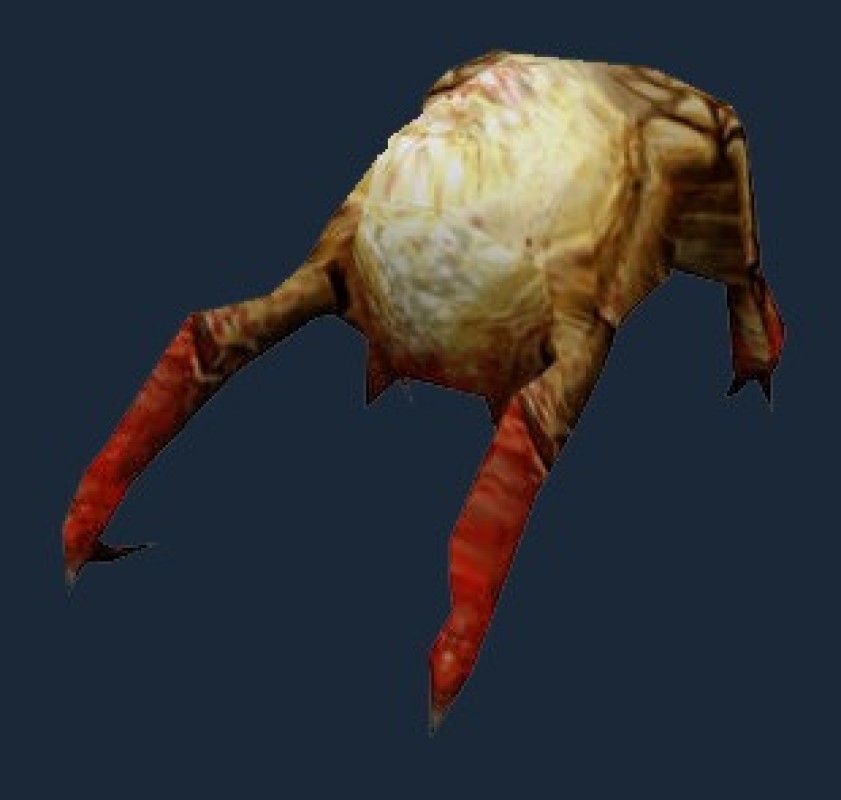
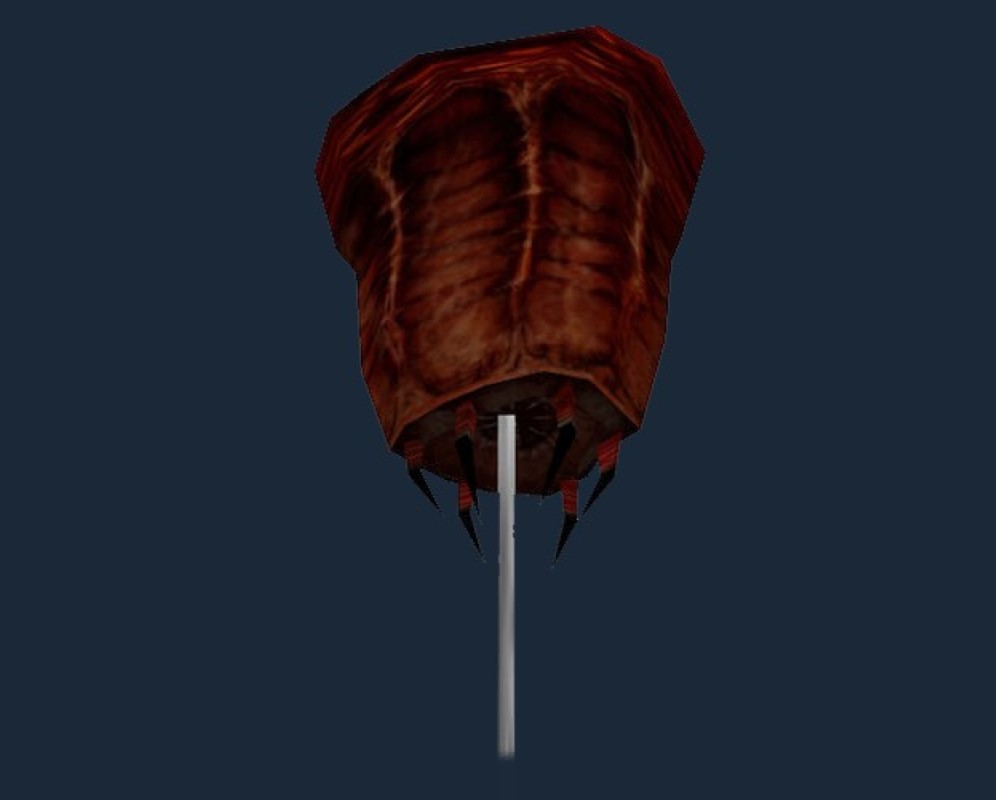
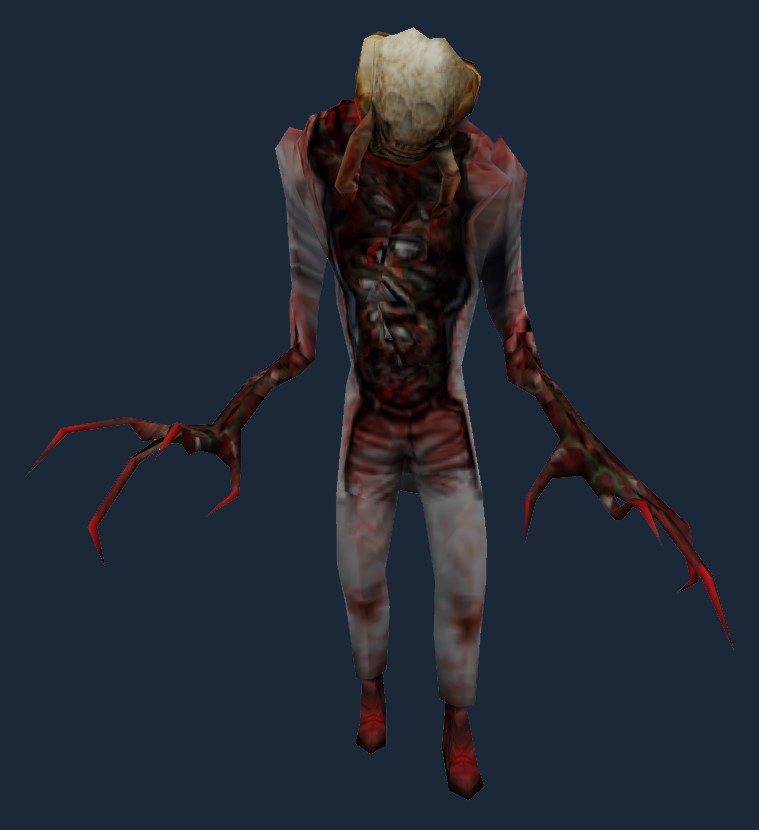
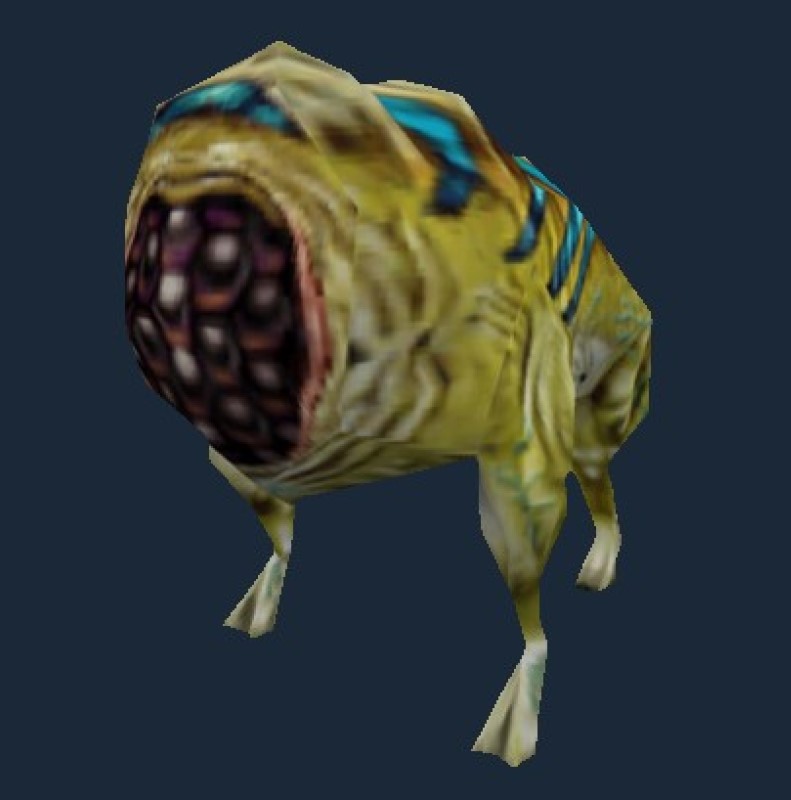
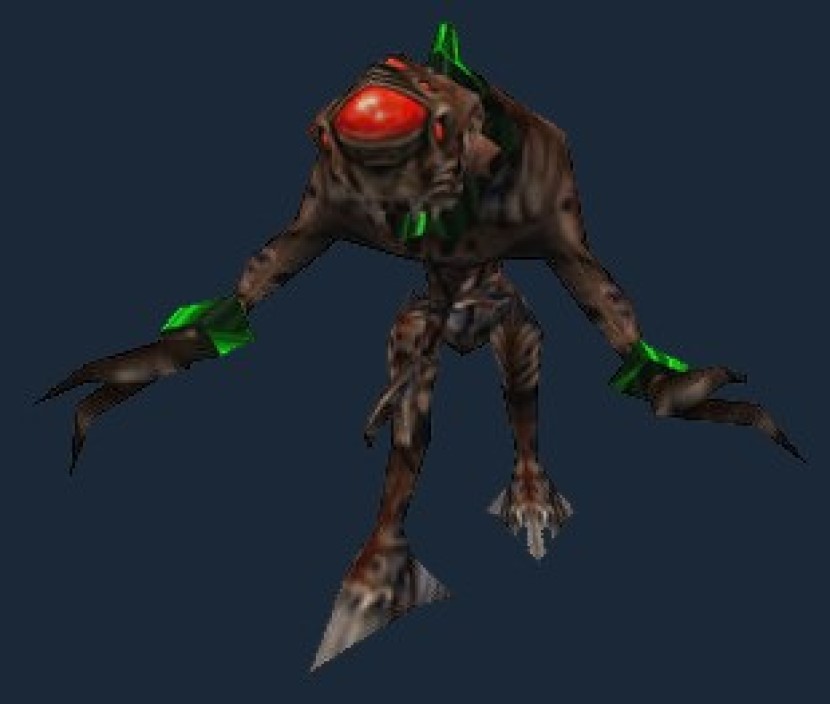
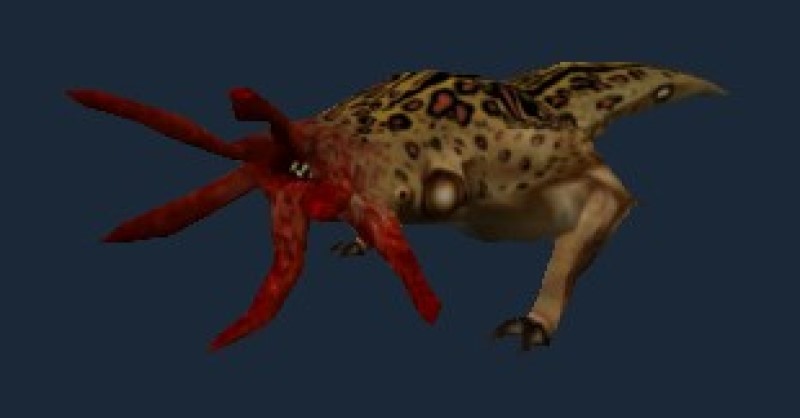
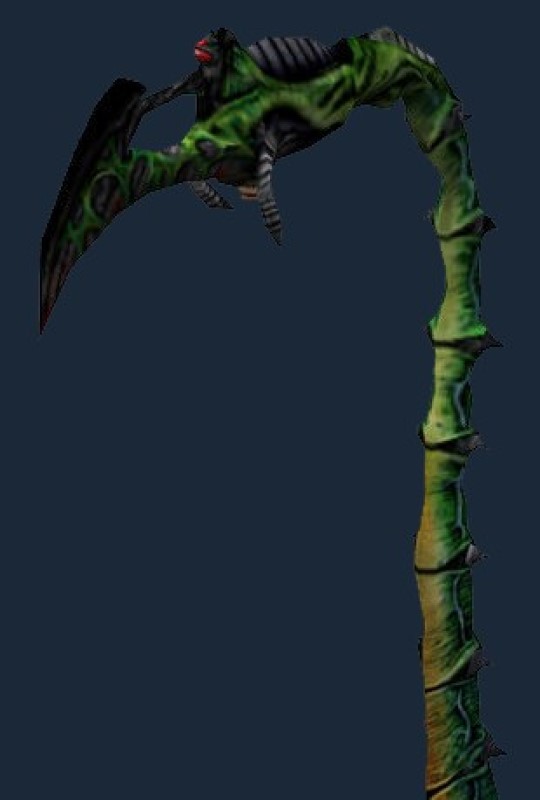
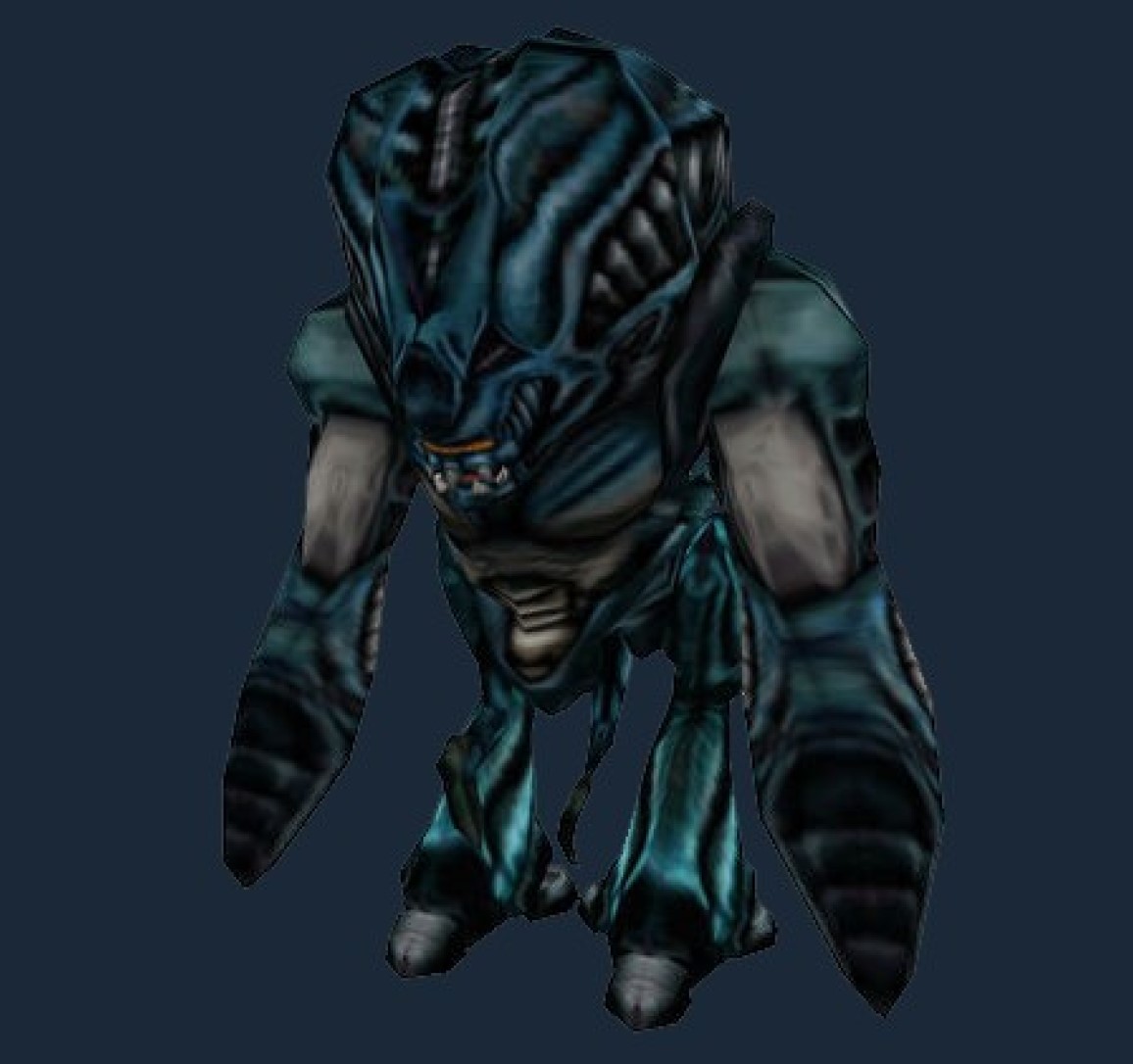
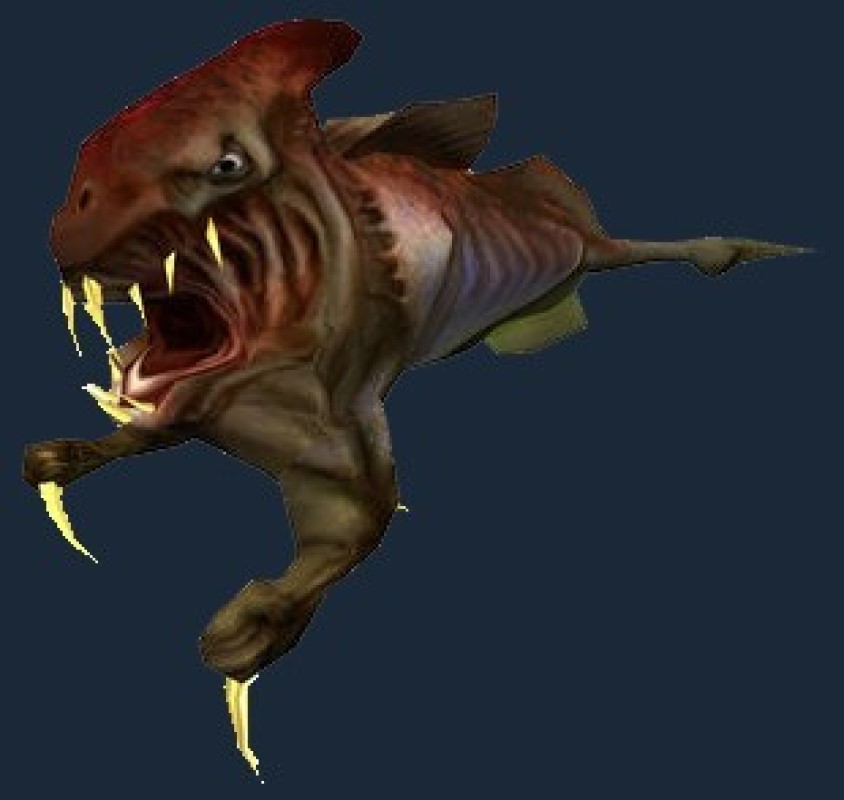
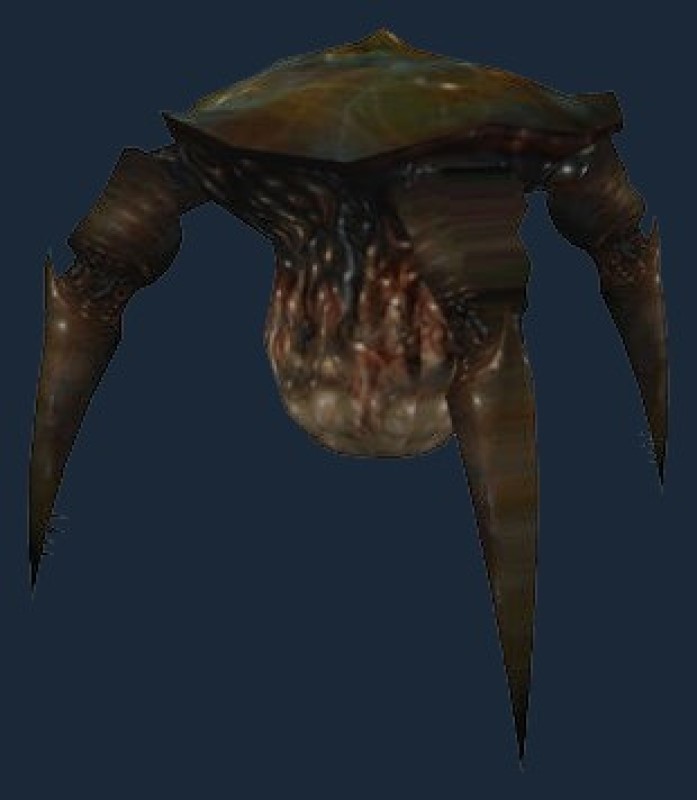
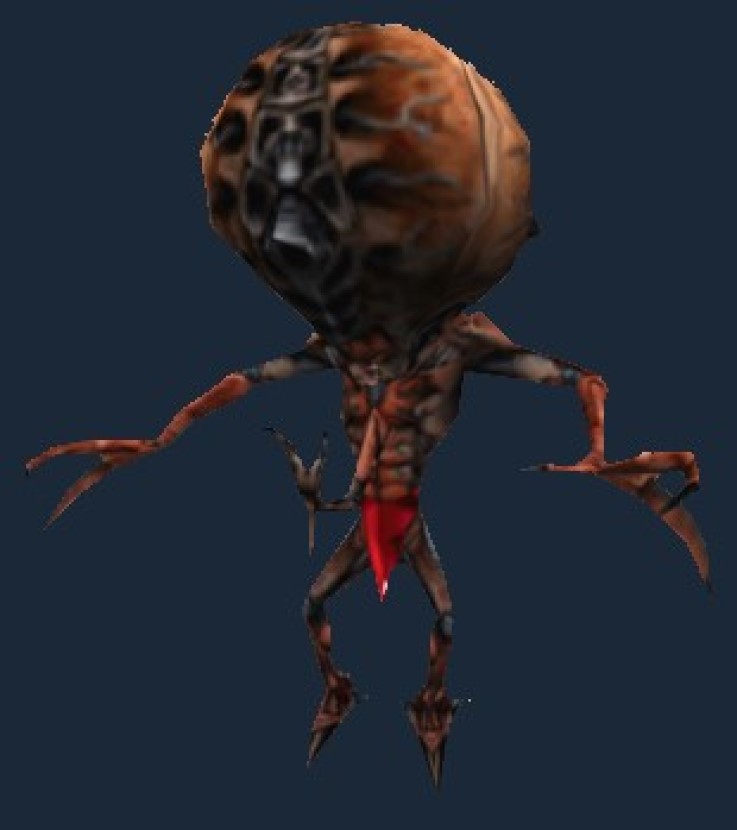
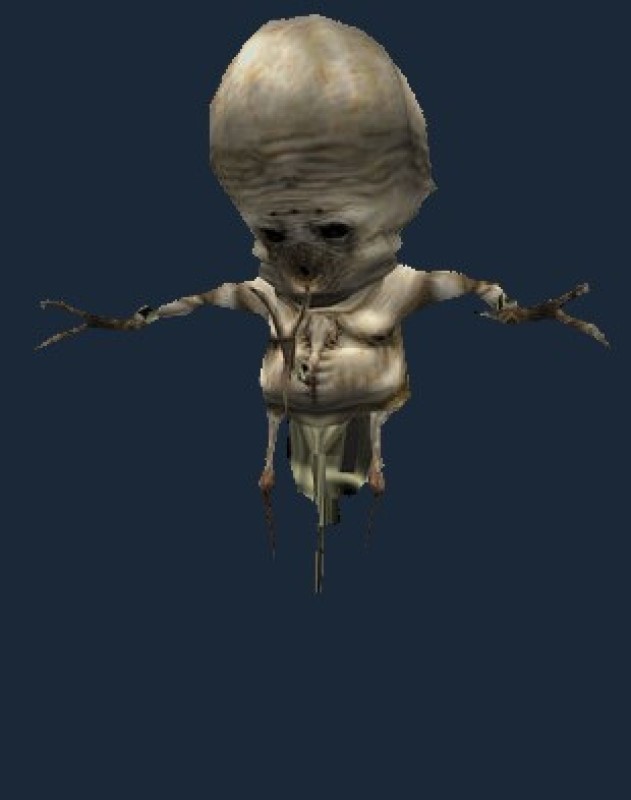
Leave a Reply